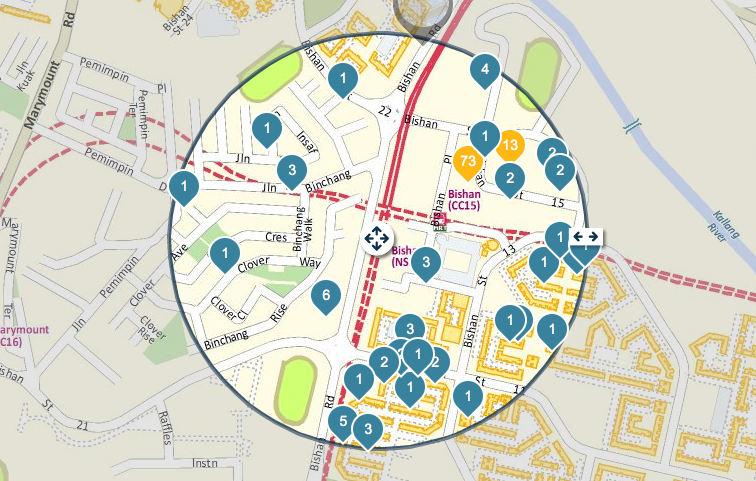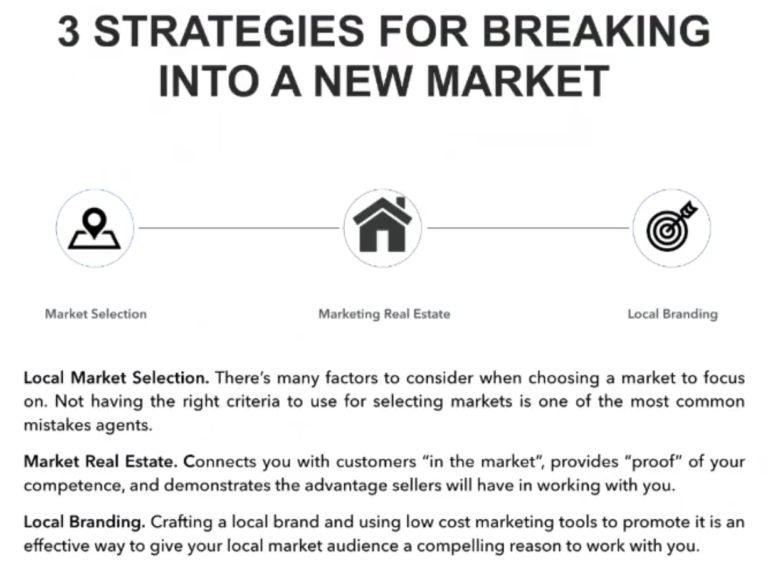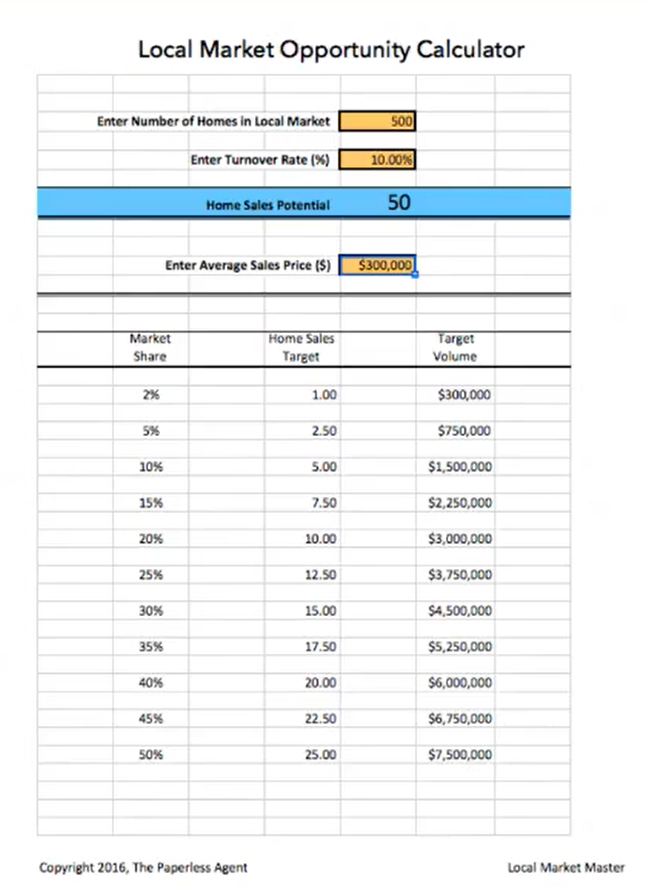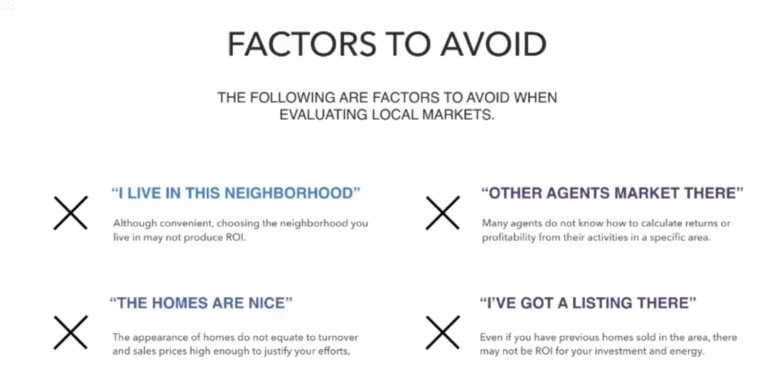You are viewing our site as an Agent, Switch Your View:
Agent | Broker Reset Filters to Default Back to ListHow to Break into and Dominate a Local Market (Even If You Don't Have Any Listings There!)
April 06 2017

Interested in expanding your business by breaking into a new market?
Many of you have shared with us that you're interested in increasing your average sales price, having better marketing strategies to expand your number of listings, and more. But before you begin investing your time and resources to grow into a new market, here are three key criteria you should use to be successful and avoid the common mistakes of many agents.
To break into a local market, it's important to identify the right market for you, then market your real estate, and build your local brand.
Here's how to analyze and choose a new market.

Calculate the turnover rate
First, you want to pick a market that has the potential to increase your listings and sales. To start, calculate the turnover rate (the percentage of home that will sell from the total number of homes in a specific area).
Here's an example: If there are 500 homes in a local market and 50 sold in the last 12 months, the turnover rate is 10 percent. Or, 500 ÷ 50 = 10 percent.
But looking at turnover rate alone isn't enough. You need to also consider the opportunity for you and how much market share you can capture.
Let's assume 50 homes are going to sell in a market and we want to acquire 10 percent of market share, so our target would be to sell five homes in this market. Keep your end goal in mind and ask yourself, "Is this goal within reach?"
One way to make these calculations easier for you is to create a spreadsheet like our Local Market Opportunity Calculator shown below.

Look at the effects on the brand
After examining the turnover rate and your potential market share, consider how the new market aligns with your brand. There are a multiple factors to think through when looking at the branding effects. For example, consider the lifestyle surrounding the area, the style of homes in the neighborhood, and the type of customers you enjoy working with. These should align with your brand.
Any type of branding requires consistency.
For example: If you claim to be a luxury brokerage, you need to show people luxury real estate. If you enjoy working with millennials, the style of homes needs to match millennials' interests and style.
Consider the opportunity in the market
Before we get started, let's talk about how NOT to assess a potential market. Often, agents fall into one of these common pitfalls:

These pitfalls won't help you further your goals, and choosing a market based on them may result in a lot of time and energy spent on a market you may not even enjoy working in!
When analyzing potential new markets, take into account where you already have existing market share! Look at all the places you've sold real estate and calculate the turnover rate for those markets.
And don't forget when exploring markets to think about your drive time. Ask yourself: "Can you afford to have a presence in the community?" You need to do market research, and for that, you must spend time in the market. If you live in the community you're trying to capture, you'll have less drive time. But don't make the mistake of picking a market just because you live in it.
Marketing Real Estate with Garry's Open House Strategy
So, you know how to analyze and choose an ideal market, now let's talk about how to break into one of those markets.
Over Garry Wise's 20 years in real estate, he has found one strategy that works in almost any market: open houses! This may surprise you if you haven't had much luck with open houses in the past, but rethinking your open house strategy can yield significant results.
This works even if you don't have a listing in the area, which may be the case when you're trying to break into a new market. You can offer to host an open house for another agent in the market. And how do you get another agent to accept this offer? Show them how this benefits them. They get exposure through your marketing channels without having to do the work.
Now let's think about Garry's open house strategy.
First, the purpose of an open house is NOT to sell the house. In fact, only 1 percent of homes sell from an open house. But that doesn't mean they can't provide A TON of value. You may just need to revamp your strategy. You need to have other purposes for your open house.
So why host an open house? These events are great for local branding and lead generation. They help build your presence in the market.
To start, blitz the neighborhood with your open house signs so people think that you sell a lot of real estate there. Keep in mind that people attending open houses are in the market even if they don't appear to be. Some people may not want to be bothered to talk to you at the event, but remember, they wouldn't be there wasting time if they weren't in the market for a home.
At your open house, get people to sign in. Let them know what's in it for them. If they think the sign-in sheet just helps you and they'll be bothered with follow-up, they won't sign in. Convince them that providing contact information will help them with their home search.
Engage people at your open house even if the property isn't for them. One way to do this is to have all the homes in the area up on your computer. Invite them to use your computer like it's their own to see if any of the other listings appeal to them. If yes, great! Send them with your business card to the home they like. Tell them to let the other agent know you sent them so they won't bother them.
Open House Sign Strategy
Now that you've learned Garry's open house strategy, make sure you get the most value from your open house sign. To be successful with your signage, remember these recommendations:
- 'Open House' should be clearly noted
- Include your branding (company name and personal name, if applicable)
- Post your signs in advance for exposure (a day before, if possible)
- Post an average of 20 signs per open house in a 3-4 mile radius
- Keep the arrows simple and functional (nothing fancy needed)
Wondering how else you can learn about a local market? Go on monthly home tours and always keep current with what's happening in the marketplace. Becoming an expert on the local market will help you build your branding, which is another key criteria for entering a new market.
Use local branding to give others a reason to work with you
It's rare that your customer is going to be the same as you. Learn your customers' preferences, potential concerns, any other agents or firms they considered working with, and more if you can. Use this information to inform your branding and ensure it aligns with your customers.
There are some tools that can help with brand communication...
Create a Facebook Business Page
Facebook is a powerful and affordable advertising platform to build your local brand. There are over 1.5 billion users spending roughly 50 minutes a day on Facebook. With its sophisticated algorithms, Facebook knows EVERYTHING about their users.
Be purposeful with your Facebook strategy to brand and promote your business.
Here's how...
Make your profile image have your likeness or company logo. The cover image should represent your business. Post images that are consistent with your branding. Use Facebook Live. It's a great way to get more traffic to your page.
But Facebook isn't the only tool available for brand communication. You can also leverage Google My Business and Yelp to strengthen your brand. In real estate, having a Google presence is essential.
Have any questions? Post them in the comments section!
To view the original article, visit the Paperless Agent blog.









